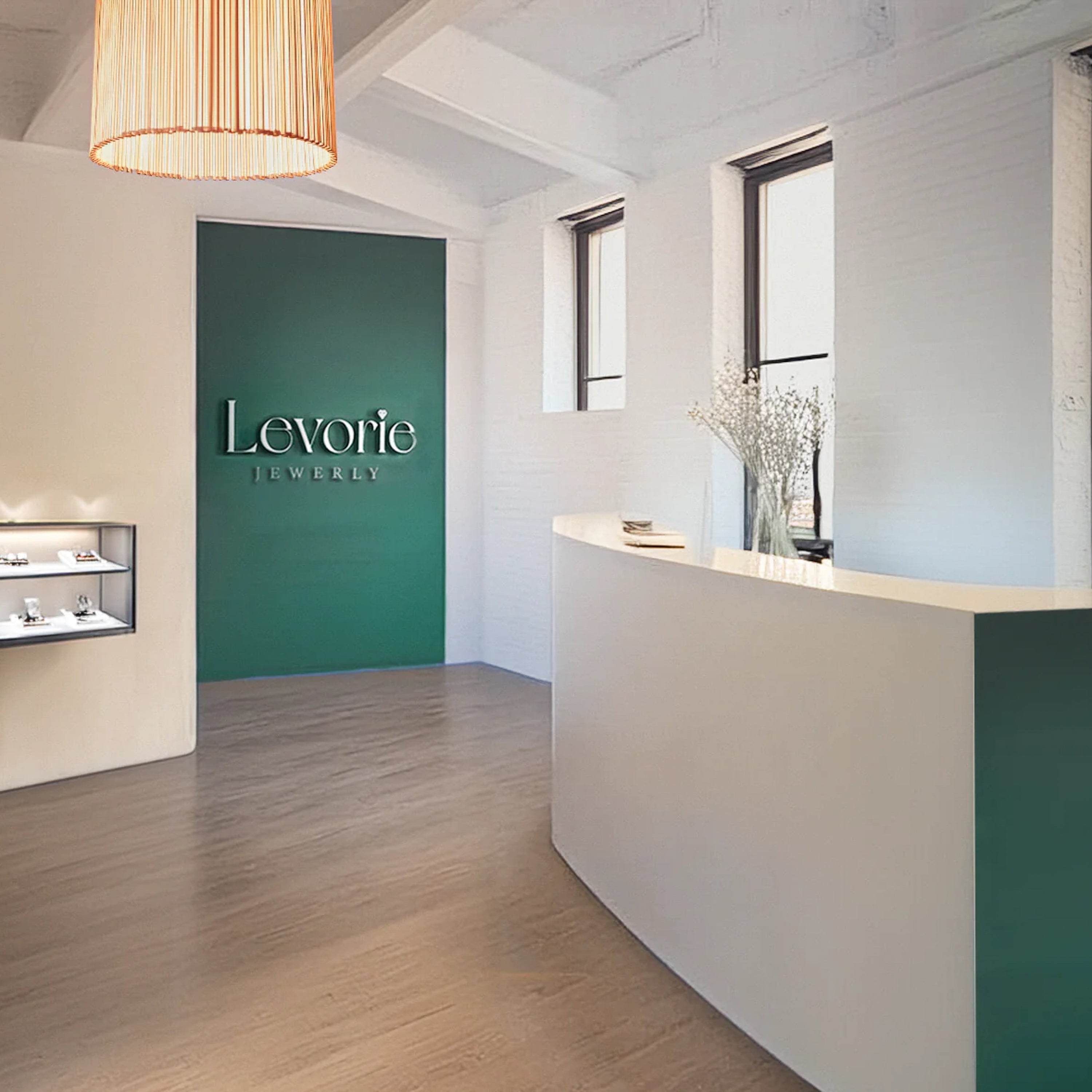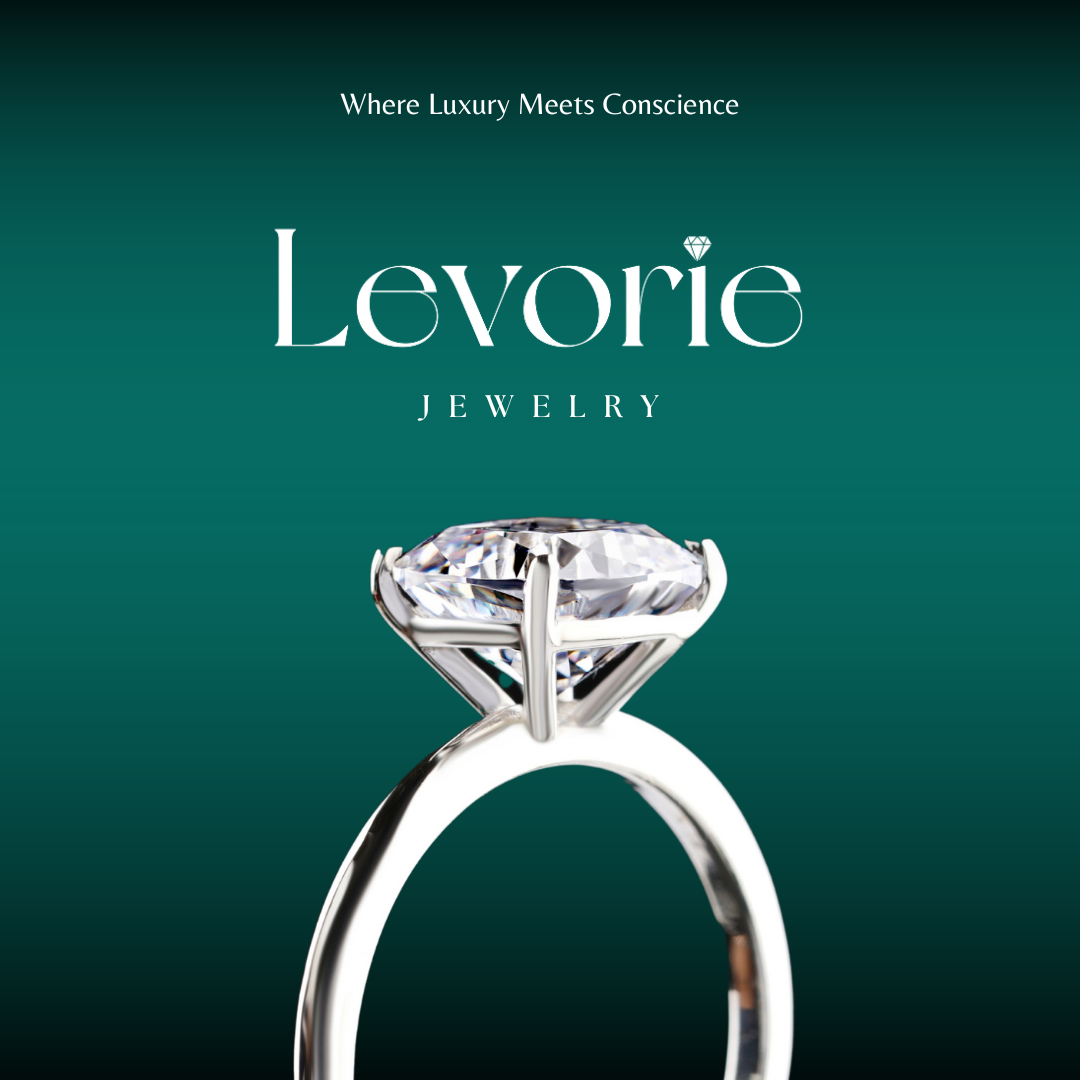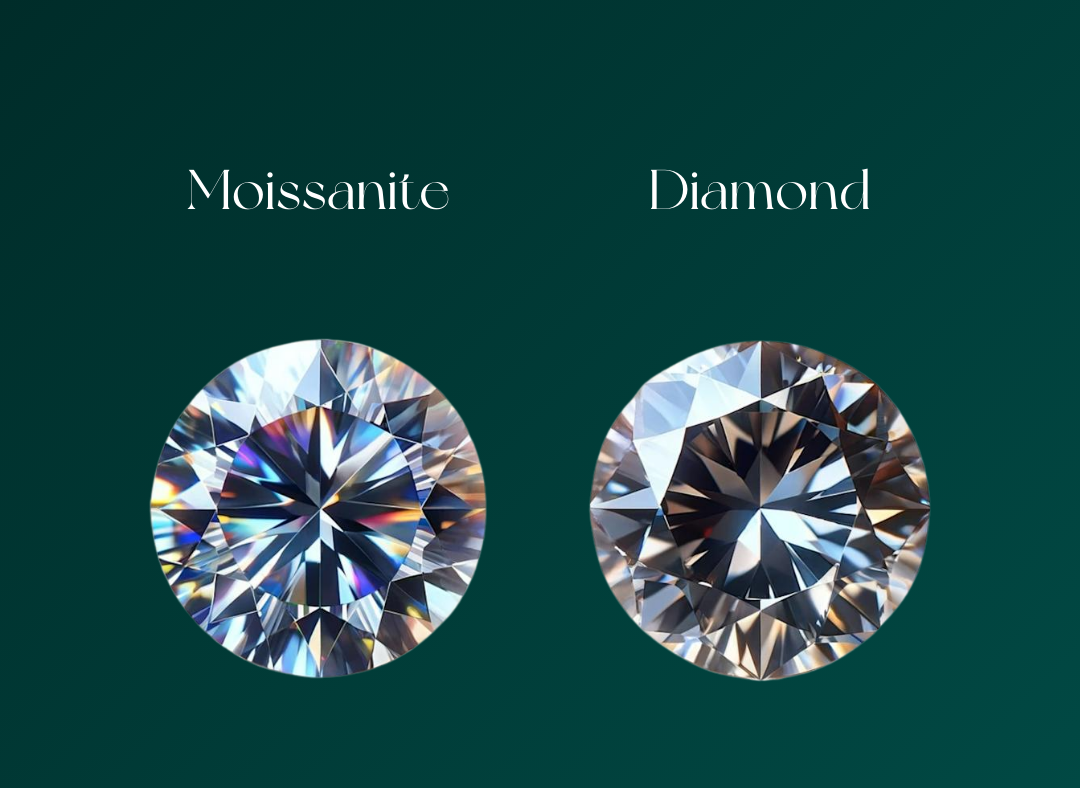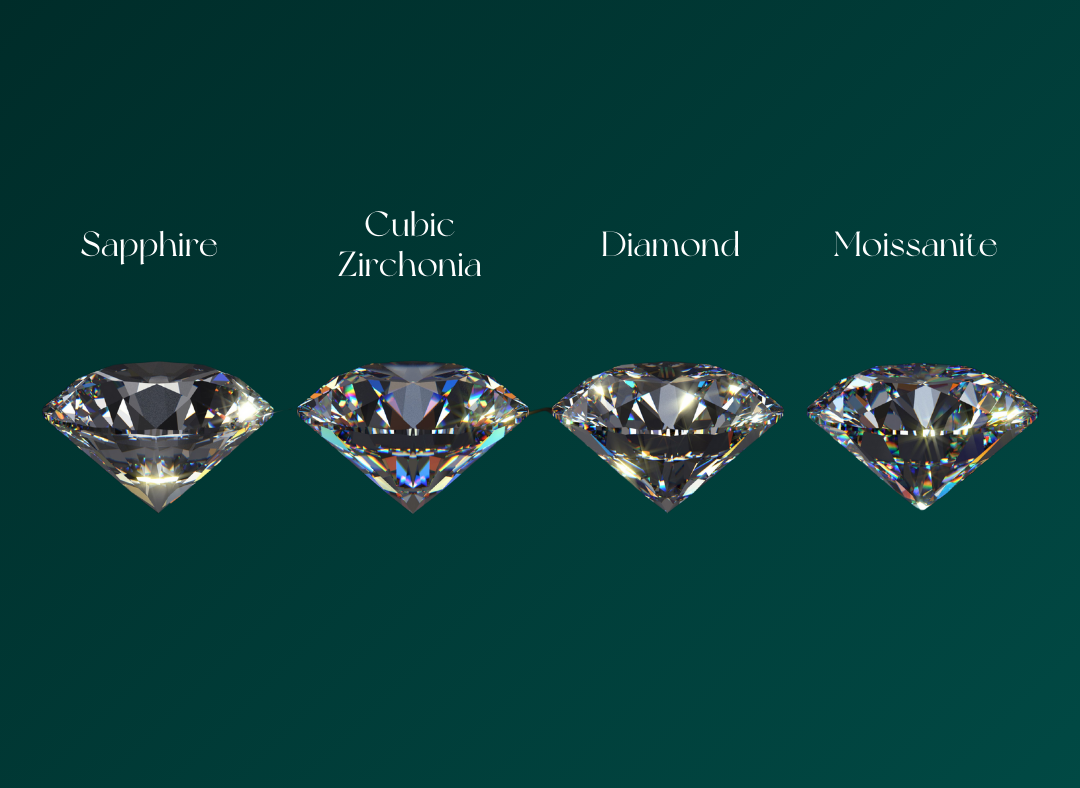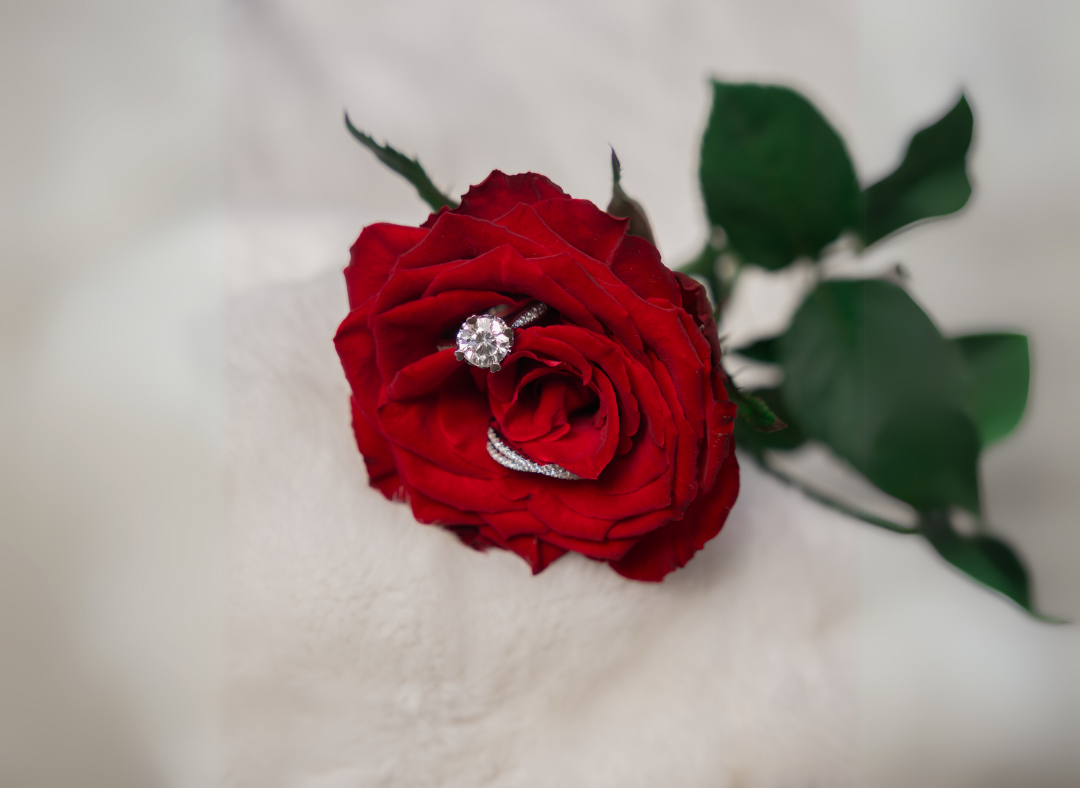
The History of Moissanite: From the Stars to Your Engagement Ring
A Gem Born from the Stars
When searching for the perfect engagement ring, many buyers consider brilliance, durability, and ethical sourcing. One gemstone that checks all these boxes is moissanite—a dazzling, sustainable alternative to diamonds. But did you know that moissanite has an extraordinary origin story, unlike any other gemstone? This brilliant stone was discovered in a meteor crater, making it a gem quite literally born from the stars. In this blog post, we’ll explore the fascinating history of moissanite, its journey from space to fine jewelry, and why it’s become a sought-after choice for engagement rings and beyond.
The Discovery of Moissanite: A Cosmic Beginning
In 1893, Nobel Prize-winning French chemist Henri Moissan made a groundbreaking discovery while examining rock samples from the Canyon Diablo meteorite crater in Arizona. Within these samples, he found microscopic crystals of an unknown gemstone. Initially, Moissan believed he had discovered diamonds, but after years of research, he realized that the crystals were composed of silicon carbide—a completely different material. This extraordinary discovery was later named moissanite in his honor.
While naturally occurring moissanite is incredibly rare and almost exclusively found in meteorites, scientists have since developed methods to create it in a lab, allowing its brilliance to be enjoyed by jewelry lovers worldwide.
The Evolution of Moissanite in Jewelry
For nearly a century, moissanite remained a scientific curiosity rather than a mainstream gemstone. That changed in the late 20th century when researchers found a way to replicate moissanite’s natural composition in a controlled environment. In the 1990s, Charles & Colvard, a pioneering jewelry company, became the first to patent and commercialize lab-grown moissanite, introducing it as an affordable yet luxurious alternative to diamonds.
Since then, moissanite has gained immense popularity, particularly among ethically conscious buyers looking for a conflict-free gemstone with unparalleled sparkle.
Why Moissanite Outshines Diamonds
Moissanite isn’t just an alternative to diamonds—it boasts qualities that often surpass them:
-
Brilliance & Fire: Moissanite has a higher refractive index (2.65 - 2.69) than diamonds, meaning it reflects more light and produces a greater sparkle.
-
Durability: Ranking 9.25 on the Mohs scale, moissanite is second only to diamonds in hardness, making it highly resistant to scratches and wear.
-
Ethical & Sustainable: Unlike mined diamonds, moissanite is lab-created, reducing environmental impact and eliminating concerns about unethical sourcing.
-
Affordability: Moissanite costs significantly less than diamonds, allowing buyers to invest in larger or higher-quality stones without exceeding their budget.
The Rise of Moissanite in Engagement Rings
With shifting consumer preferences, moissanite has seen a dramatic rise in engagement ring sales. Modern couples prioritize ethics, sustainability, and value, making moissanite an appealing choice. Additionally, jewelry designers have embraced moissanite for its versatility, crafting stunning solitaire, halo, and vintage-style engagement rings.
At Levorie, we specialize in hand-cut moissanite jewelry, ensuring each piece showcases the gemstone’s maximum brilliance. Unlike mass-produced stones, our moissanite features precise facets and well-defined edges, making it truly exceptional. Explore our moissanite engagement rings to find your perfect match.
Debunking Common Moissanite Myths
Despite its growing popularity, some misconceptions about moissanite persist. Let’s set the record straight:
-
"Moissanite is just a fake diamond."
-
False! Moissanite is a unique gemstone with its own distinct composition and characteristics. While it resembles a diamond, it outshines most diamonds in fire and brilliance.
-
"Moissanite turns cloudy over time."
-
Another myth! High-quality moissanite retains its clarity and sparkle indefinitely with proper care.
-
"Moissanite is too soft for daily wear."
-
With a 9.25 Mohs hardness rating, moissanite is incredibly durable and suitable for everyday wear.
Moissanite vs. Other Diamond Alternatives
Many buyers compare moissanite with other diamond alternatives, such as lab-grown diamonds and cubic zirconia (CZ). Here’s how they stack up:
|
Feature |
Moissanite |
Lab-Grown Diamond |
Cubic Zirconia |
|
Brilliance |
Higher than diamonds |
Similar to diamonds |
Less than moissanite |
|
Durability |
9.25 Mohs |
10 Mohs |
8 - 8.5 Mohs |
|
Ethical Sourcing |
100% conflict-free |
100% conflict-free |
100% conflict-free |
|
Price |
More affordable |
Higher |
Very low |
While lab-grown diamonds are a great alternative for those seeking a diamond’s exact composition, moissanite offers more brilliance at a fraction of the price. Learn more about why moissanite is superior to lab-grown diamonds.
How to Care for Moissanite Jewelry
Moissanite requires minimal maintenance to retain its brilliance. Follow these simple care tips:
-
Clean regularly with mild soap, warm water, and a soft brush.
-
Avoid harsh chemicals that may dull the setting.
-
Store separately to prevent scratches from harder metals or stones.
For more detailed care instructions, check out our Moissanite Jewelry Care Guide.
Conclusion: The Future of Moissanite
Moissanite has come a long way since its discovery in a meteorite over a century ago. Today, it stands as a premier choice for engagement rings, wedding bands, and fine jewelry, offering unparalleled beauty, durability, and ethical sourcing. Whether you’re drawn to its cosmic origins or its unmatched sparkle, moissanite is a gemstone that truly shines.
At Levorie, we are committed to providing the finest moissanite jewelry, blending conscious luxury with exceptional craftsmanship. Browse our latest collection and discover the brilliance of moissanite for yourself.

